It’s always best to call a professional exterminator if you suspect you have a problem with carpenter ants. A pest control professional will know how to properly identify the species of carpenter ants present in your area and what products work best to eliminate them.
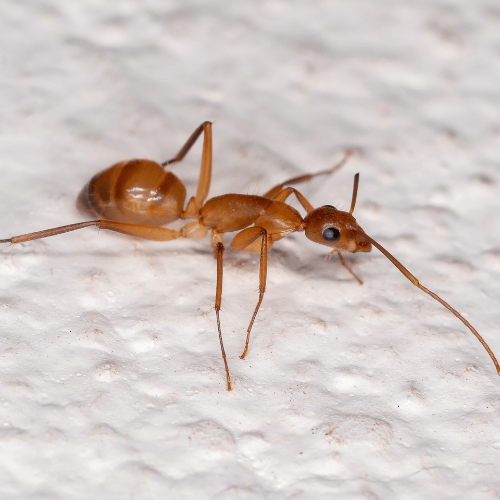
At 1st Choice Pest Control our experts can identify for you and offer multiple solutions for their removal and control including methods that are 100% chemical free!
Signs of a carpenter ant infestation may include seeing large black ants inside or outside of your home, hearing rustling or tapping sounds coming from inside walls, and finding piles of sawdust near wooden structures.
Effective carpenter ant treatments may include using bait traps, insecticide sprays or dusts, and sealing cracks and gaps in walls and floors to prevent ants from entering your home. It’s best to consult with a pest control professional for the most effective treatment plan.
Carpenter ants can damage homes by tunneling through wooden structures, causing structural damage over time.
To prevent carpenter ants from entering your home, seal any cracks or gaps in walls or floors, eliminate sources of standing water, and remove any infested wood from your property.
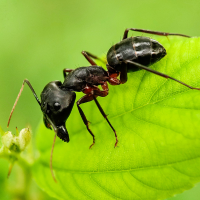
The Black carpenter ants are known to forage up to 100 yards in search of food. Workers are most active at night, traveling from their nest to a food source following trails. The ants produce crackling sounds that can often be heard near a large nest. A large colony can have thousands of individuals. The black carpenter ant does not sting, but the larger workers can administer a sharp bite, which can become further irritated by the injection of formic acid. In their natural environment, carpenter ants nest in dead trees and other deadwood. This enhances decay, which has ecological benefits. However, the ant achieves pest status when a colony invades the wood of a house or other structure, damaging its structural integrity.
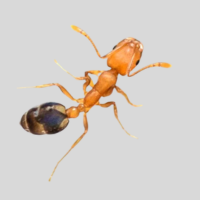
Pharaoh workers are about 1/16-inch, or 2.0 millimeters, in length. They are light yellow to reddish-brown in color with a darker abdomen. Pharaoh ant workers have a non-functional stinger used to generate pheromones. The petiole (narrow waist between the thorax and abdomen) has two nodes and the thorax has no spines. Pharaoh ant eyesight is poor and they possess on average 32 ommatidia. The antennal segments end in a distinct club with three progressively longer segments. This ant can be found almost anywhere in the world. It is a major pest in the United States, Australia, and Europe.
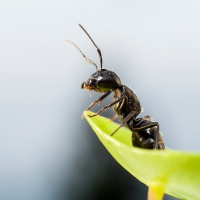
The pavement ant, Tetramorium caespitum is an ant native to Europe, which also occurs as an introduced pest in North America. Its common name comes from the fact that colonies in North America usually make their homes in the pavement. It is distinguished by one pair of spines on the back, two nodes on the petiole, and grooves on the head and thorax. During early spring, colonies attempt to conquer new areas and often attack nearby enemy colonies. These result in huge sidewalk battles, sometimes leaving thousands of ants dead. Because of their aggressive nature, they often invade and colonize seemingly impenetrable areas outside their native range. In summer, the ants dig out the sand in between the pavements to vent the nests.
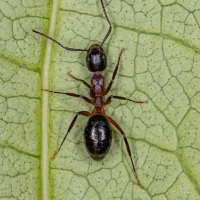
The Odorous House Ant (Tapinoma sessile) is a native species, found throughout the United States. It earns its name by producing a foul, "rotten coconut" odor when crushed. They are often confused with the pavement ants, but has only 1 node. They forage day and night The nests can occur in a great variety of situations. Inside, these Ants usually construct their nests in wall voids, especially around hot water pipes and heaters, in crevices, sinks, cupboards, etc. Outside they are found in exposed soil, usually shallow, often located beneath a board, brick, stone walk, etc. They are most likely to enter buildings when their honeydew supply or sweet supply of food is reduced by natural occurrences such as rainy weather or autumn leaf fall.
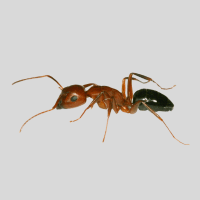
The Allegheny mound ant Formica exsectoides is a species of ant native to the Atlantic area of North America. Its range extends from Nova Scotia to parts of Georgia. Like other field ants, the Allegheny mound ant builds large mounds, however, this species tends to build some of the largest. Aside from the mounds, the ants also act as pests by killing vegetation within 40 to 50 feet of their mounds. The ants inject formic acid into surrounding plants, killing small trees and shrubs. The Allegheny mound ant's appearance is very striking: both its head and thorax are red-orange; its gaster is black-brown. The ant's colonies are complex. Several different mounds may be interconnected. The tunnels may extend 3 feet into the ground and 4 feet upwards in the mound. The mound serves as a solar incubator for the eggs and larvae. Unlike most other ants, Allegheny mound ants have multiple queens. Maturation from egg to adult takes 2.5–3 months. They hunt a wide assortment of arthropods as a protein source and collect aphid honeydew as a source of sugars.
100% Eco-Friendly Options
Copyright © 1st Choice Pest Control 2024 - All Rights Reserved. developed By Sleeks IT Solutions